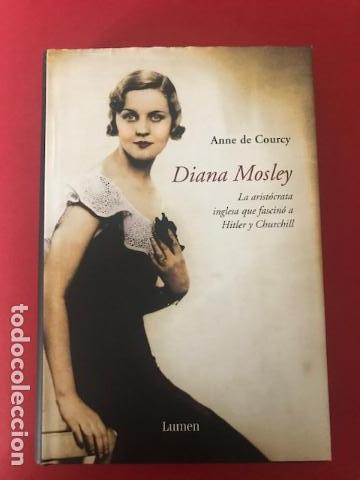

Evelyn Waugh and John Betjeman were both part of her circle. She could be extremely kind as many of those imprisoned with her could testify, and she had a rich personal and social life, surrounded by the artistic, the beautiful, the great and the good. She was a devoted mother who suffered miserably when she was imprisoned and separated from her children, especially the babies. While she makes no excuses for her subject, she also refuses to offer the reader a one dimensional villain Diana’s attachment to fascism and its adherents is repulsive, all the more because Diana herself was not. Given their basic incompatibility, the divorce was not a great surprise, but the ruthlessness with which Diana pursued it was striking.Īnne De Courcy’s book is a riveting depiction of a beautiful, intelligent, charming and utterly terrifying woman. She showed this very clearly indeed when she shook off her first husband, Bryan Guinness, the father of her two small sons, after only four years of marriage. Although there is no doubt as to Oswald Mosley’s influence, Diana was too powerful a character in her own right to allow a man to tell her how to act and think. Diana’s behaviour, including her politics was her responsibility alone. She also refuses to patronise her subject.

She did it from the tender age of 22, willingly and purposefully and in so doing, she yoked herself, not just with British fascism, but also its much more destructive European cousin and those who espoused it, including Adolf Hitler himself.ĭe Courcy begins her preface by stressing her abhorrence of Diana’s politics and her refusal to whitewash her, and the use of her subject’s married name is very telling in that regard. De Courcy’s use of Diana’s married name emphasises the political woman, the one who linked her destiny to that of one of the most powerful, high profile politicians of his time.

The Mitfords were serious young women living in extraordinary times, but their name has associations with debs, coming out balls and all the trappings of high society. We don’t know why De Courcy did it as she doesn’t tell us, but the effect is to put some distance between Diana and her Mitford background. The title – De Courcy uses Diana’s married name rather than the equally famous Mitford – tells the reader a little of her approach to her subject. This biography of the most famous of the Mitford sisters was published in the same year as her death at the age of 93.


 0 kommentar(er)
0 kommentar(er)
